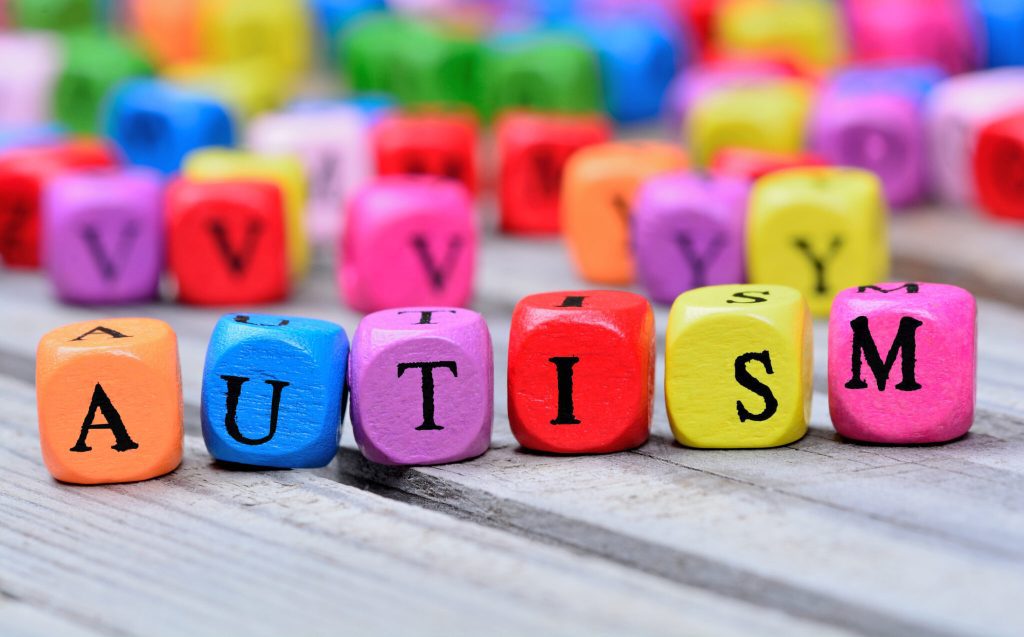April is Autism Awareness Month! Over the past couple of years, the general discourse surrounding autism has grown and developed to the point that it is becoming more widely accepted. People who previously would have dismissed symptoms are embracing their experiences and bringing empowerment to what it means to be autistic. This widespread acceptance has led to exploration and thus, many questions. In this blog, I’ll attempt to address two of those questions: what does it mean to be autistic, and what do we do after diagnosis?
Autism is characterized by two domains: impairments in social interaction, and repetitive and restricted behaviors. What does that mean? Impairments in socialization can mean an inability to determine emotion based on facial expressions, struggling to imagine oneself in another’s experience, and restriction in theory of mind – meaning a lower ability to determine others’ intentions and subsequently predict their behavior. Repetitive behaviors may present as rocking back and forth or repeating or echoing words; restricted behaviors can include full engrossment into activities and interests to the point of disrupting daily life, or can be an inability to see multiple sides of an argument. Restricted and repetitive behaviors can change over time, depending on the person’s developmental stage. In layman’s terms, an individual may not engage in the same behavior they did as a kid in adulthood, and may even change to reflect what is more socially acceptable.
As Autism disorder exists on a spectrum, behaviors that fall into these two domains may differ in presentation and intensity. An individual may function well in social settings, but struggle to cope with unpleasant noises, lights, and movement in their environment. Others may thrive in a well-structured environment and be able to focus on one task for hours, but feel unable to handle changes in their routine. Mental health providers take into account a client’s current functioning strengths and challenges, and collaborate with the client and their family on treatment goals.
Treatment
It is important to note here that treatment only addresses experiences that are harmful or distressing to the individual. If a client comes in with a special interest that their peers don’t understand, the goal would not be to reduce engagement in the interest, but rather to improve socialization skills to facilitate communication with peers. Not all traits or experiences of autism require treatment, and many people may find they can use their own coping skills to manage their experience. When an autistic person does seek out treatment, we have several considerations we take in the therapy room. What are the client’s sensory needs? Where are the challenges, and where are the strengths? Most importantly, what does the client feel they need?
Two main avenues of treatment include traditional therapy and ABA, or applied behavioral analysis. Applied behavioral analysis is a common therapy used with autistic children to encourage development of functional skills, and encourage wanted behaviors. Positive behavioral and support therapy provides an empowering environment for clients to learn and grow. Pivotal response training takes place in the client’s usual environment and can focus on the client’s strengths. When working with autistic adults it is imperative – while taking an individualized treatment approach – to leverage the client’s strengths and provide clear steps in developing new skills.

Traditional therapy, often cognitive behavioral therapy (CBT), can be helpful for Autistic clients in recognizing the connection between thoughts, emotions, and behaviors. CBT is a flexible treatment approach that attunes to the individual client’s needs and strengths.
This does depend on the client’s level of functioning and readiness for change. If a client’s limitations in functioning affect their ability to emotionally process their experience, traditional therapy would not be a good fit for them. During assessment, clinicians can determine if behavioral or traditional therapy suits the client, and include the client in the treatment decision process when appropriate.
Undiagnosed adults present a unique challenge, as they have been able to move through life in a way that others do not perceive the individual’s struggle. They may be labeled as socially awkward or anxious, weird, or nerdy. They may grow up thinking something is wrong with them, unable to determine how best to get help. In the therapy room, we first address the insecurities and fears that have arisen as a result of going undiagnosed for so long. Likely the coping mechanisms that have carried them this far have reached the end of their usefulness – work in the therapy room may then look like building skills that have gone unhoned or never have developed in the first place.
Ultimately, it is important to note that autism is not an illness, nor does it mean that something is wrong with a person. It is a difference in cognitive structures, a difference in experiencing the world.
When considering yours or a loved one’s treatment, it is important to consider the ability and readiness of the potential client. What are daily functioning levels, and what does the client need to accomplish their goals? If the client struggles with areas such as social and facial cues, treatment would then focus on skills and behavior training. If the client struggles mainly with anxiety and low self-esteem, the mental health care provider may recommend traditional talk therapy.
Ultimately, you as the client know what you need best. Look for a mental health provider that will center your experience and needs. At Milestones, we can provide mental health therapy for individuals seeking help with social skills, communication, and emotional processing. If you are interested in services, give Milestones a call at (443) 574-4295.
Meghan Powers, LGPC

